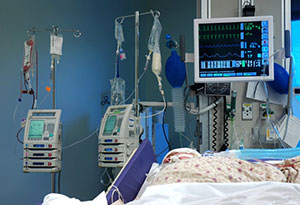
Mechanical ventilation is an essential, life-saving therapy for more than 300,000 patients in the U.S. each year. However, because of being mechanically ventilated, these patients are at high risk for complications and poor outcomes, including death. Approximately 5-10% of mechanically ventilated patients develop VAE’s secondary to complications related to mechanical ventilation, that lead to longer stays in the ICU and hospital, increased healthcare costs, and increased risk of death and disability. The current surveillance criteria identify a broad range of conditions and complications that occur in mechanically-ventilated adults that may be preventable. These include: Ventilator-Associated Condition (VAC), Infection-related Ventilator-Associated Complication (IVAC), and Possible VAP (PVAP).
Most VAC’s are due to pneumonia, Acute Respiratory Distress Syndrome (ARDS), atelectasis, and pulmonary edema. IVACS are often associated with pneumonia. To reduce VAE’s, hospitals are encouraged to focus on:
- Interventions, or a ventilator bundle, that have been proven to decrease the occurrence of VAE and associated mortality, length of stay and cost.
- Delirium assessment and prevention.
- Exercise and early mobility.
- Family Engagement and empowerment.
Getting Started
Safety Action Bundle – Ventilator Associated Events (VAE)
Toolkit
Agency for Healthcare Research and Quality (AHRQ) Toolkit to Improve Safety for Mechanically Ventilated Patients:
Toolkit to Improve Safety for Mechanically Ventilated Patients
Resources
National Healthcare Safety Network Surveillance for Ventilator-associated Events:

